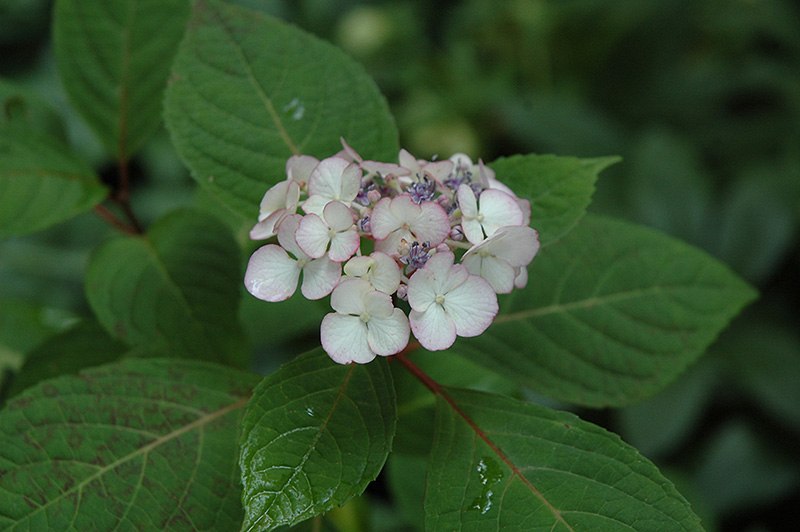>> Home
Preziosa Hydrangea
Hydrangea serrata 'Preziosa'
Height: 4 feet
Spread: 4 feet
Sunlight:
![]()
Hardiness Zone: 5
Other Names: Hydrangea macrophylla var.serrata
Description:
A beautiful compact shrub that features showy lacecap flowers that change from white to light-pink to red-pink; serrated leaves are tinged with burgundy in the fall; a wonderful choice for the flower garden
Ornamental Features
Preziosa Hydrangea features bold white lacecap flowers with pink overtones at the ends of the branches from mid summer to early fall. The flowers are excellent for cutting. It has dark green deciduous foliage. The fuzzy lobed leaves turn an outstanding burgundy in the fall.
Landscape Attributes
Preziosa Hydrangea is a multi-stemmed deciduous shrub with an upright spreading habit of growth. Its relatively coarse texture can be used to stand it apart from other landscape plants with finer foliage.
This is a relatively low maintenance shrub, and should only be pruned after flowering to avoid removing any of the current season's flowers. It has no significant negative characteristics.
Preziosa Hydrangea is recommended for the following landscape applications;
- Accent
- Mass Planting
- General Garden Use
Planting & Growing
Preziosa Hydrangea will grow to be about 4 feet tall at maturity, with a spread of 4 feet. It has a low canopy. It grows at a medium rate, and under ideal conditions can be expected to live for approximately 30 years.
This shrub does best in a location that gets morning sunlight but is shaded from the hot afternoon sun, although it will also grow in partial shade. Keep it away from hot, dry locations that receive direct afternoon sun or which get reflected sunlight, such as against the south side of a white wall. It prefers to grow in average to moist conditions, and shouldn't be allowed to dry out. It may require supplemental watering during periods of drought or extended heat. It is not particular as to soil type, but has a definite preference for acidic soils. It is somewhat tolerant of urban pollution, and will benefit from being planted in a relatively sheltered location. Consider applying a thick mulch around the root zone in winter to protect it in exposed locations or colder microclimates. This is a selected variety of a species not originally from North America.
